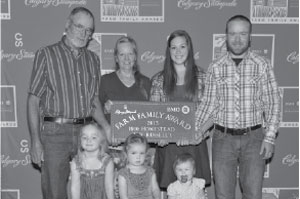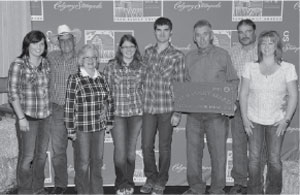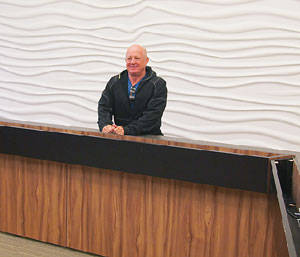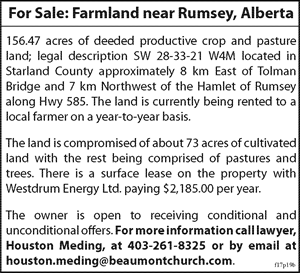The Russell Family
Dryland farming is the norm, rather than the exception, in most of Alberta. It must have been something of a shock to Mark Wilson, who came from the relatively lush farmland around Hagersville, Ont., when he homesteaded the area just north of Drumheller in 1910.
Actually, according to Wilson’s grandson Craig Russell, the well-regarded carpenter from Ontario didn’t really want to farm at all. It was Mark’s son, also named Craig, who drove the family’s acquisition of their first farm.
“This whole area has no well water; Craig Russell says. “It must have been horrendous, especially in the early days.”
A coulee near the farm has a small spring, so the early settlers made a road down to it.
“They dragged barrels down and hauled water up. They dug dugouts and built little dams.”
In his youth, says Craig, he can remember how “you got a truck and put a tank in the back and went to Drumheller."
Today, water comes to the farm via a pipeline from the Drumheller water system.
Craig Russell is the nephew of Craig Wilson and his son Calvin is now beginning the process of taking over the farm. The family operation is called 5G Farms, because Calvin’s children will be the fifth generation on the land, and the Russells are the 2013 BMO Farm Family of the Year for Starland County.

The Russell family was recognized as a BMO farm Family for Starland County at the Calgary Stampede.
Calvin’s years of mechanical experience in the oilfields will be very useful, Craig says, considering the highly sophisticated equipment that today’s farming requires. Much of the farm features heavy soil. So heavy, in fact, that the first Craig (Wilson) complained that it couldn’t be broken with horses, and that only steam engines had enough power to pull a plow through it.
Mind you, it was a piece of the farm with much lighter soil that drove the family’s change from summer fallowing to continuous cropping.
“It was just blowing away on us. It was frustrating. We couldn’t get a crop off it; Craig Russell remembers. “We started cropping and cropping on it and it started to get better and better. Today it’s one of the better pieces of property that we have.”
It took more than a new theory of tilling and seeding to make the changes happen.
“That’s the advantage of having the better equipment. Those old discs they used to have, they had to have it pretty black to be able to seed through the trash. Today, we’re lucky. We can seed through a lot of trash and that trash is mulch that keeps the soil moist.”
Of the 3,500 acres (about half of it owned) that the Russells farm, about 1,000 acres are in canola, 1,000 are in barley, and the rest is split between flax and wheat.





























